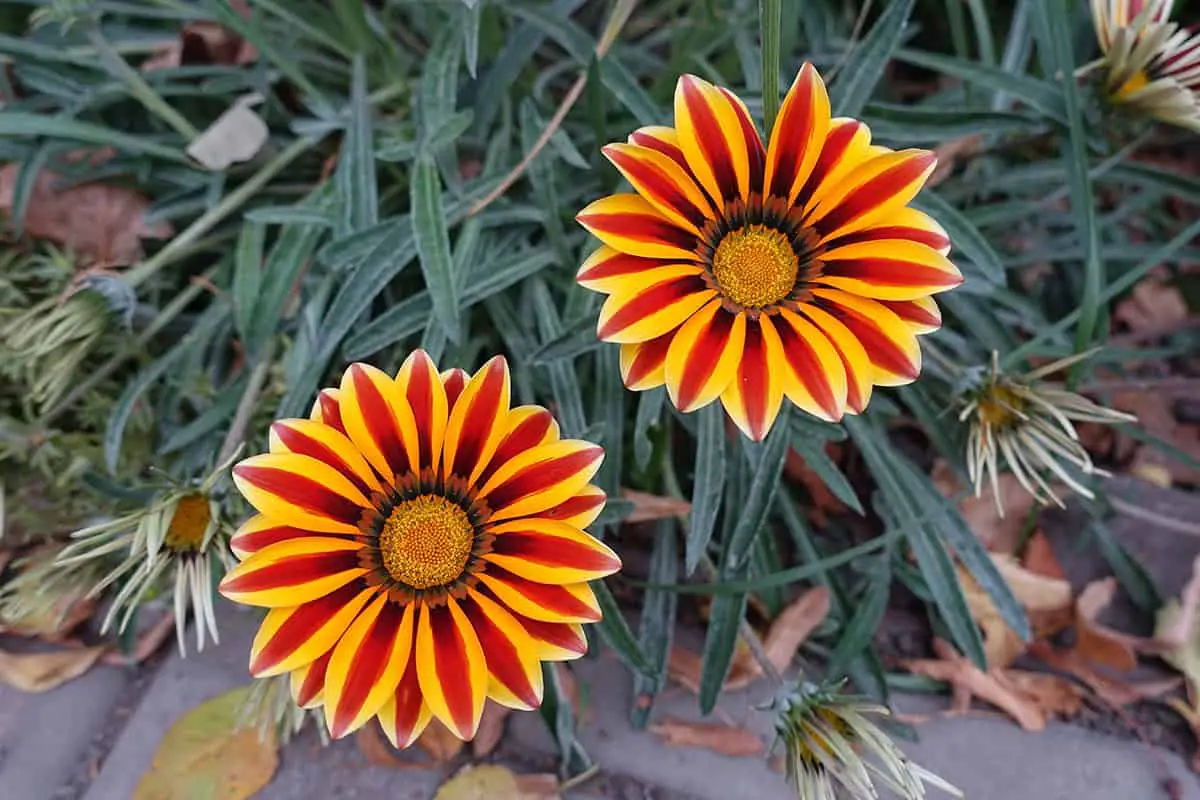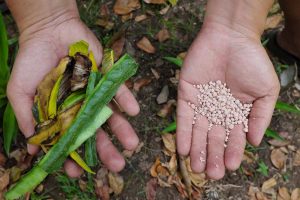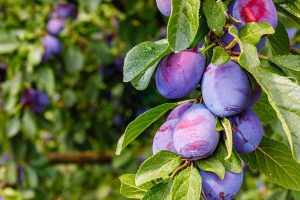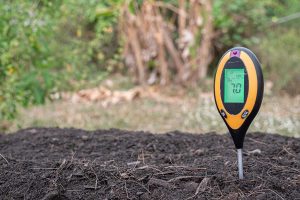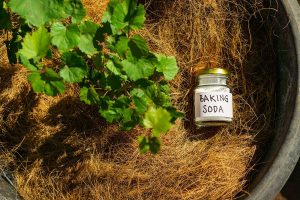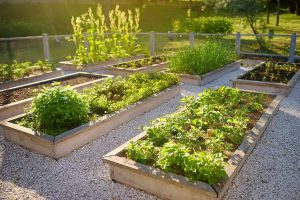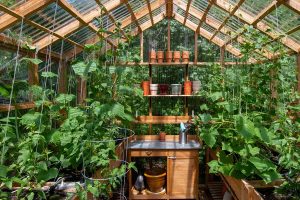A sun-soaked afternoon in June, a garden bursting with vibrant colors, and the sweet scent of blooming flowers wafting through the air—there’s something magical about summer plants that can transform any outdoor space into a personal paradise. In this article, we’ll guide you through the best choices for summer flora, from sunflowers that tower majestically to succulents that laugh in the face of drought.
Table of Contents
Marigolds

Marigolds are popular summer plants known for their vibrant colors. They typically feature orange, yellow, and red hues. These flowers are easy to grow and maintain, making them ideal for novice gardeners.
Marigolds belong to the genus Tagetes. They range from small, bushy varieties to taller plants. Some species can grow as high as seven feet. Signet marigolds are particularly notable for their fern-like, lemon-scented foliage and edible, tarragon-flavored flowers.
Marigolds thrive in almost any soil with good drainage. They are resilient and can withstand different conditions. These plants are also known for their ability to suppress plant-parasitic nematodes. This ability makes them a valuable addition to vegetable gardens.
You will find many types of marigolds. French marigolds are generally less than 15 inches tall. They produce flowers with a wide range of colors, including stripes. Removing faded flowers, or deadheading, can encourage more blooms.
Certain marigold varieties, like the Big Duck Orange, have been recognized for their strong performance in flower trials. These trials assess annuals for qualities like bloom size and resilience.
Marigolds offer a few practical uses beyond their aesthetic appeal. The flowers are often used in companion planting to deter pests. Their aroma repels many insects, reducing the need for chemical pesticides.
Zinnias
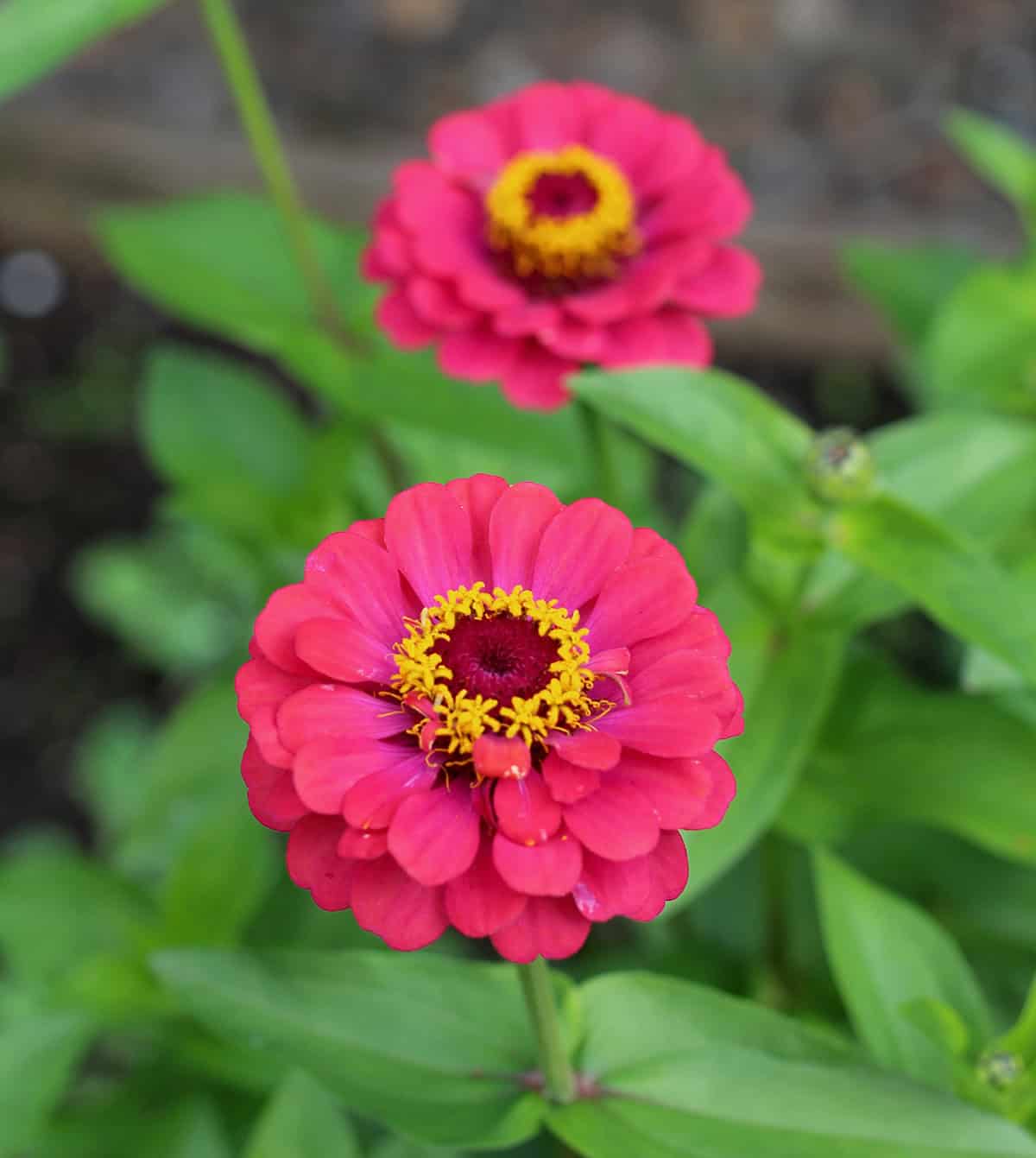
Zinnias are vibrant, easy-to-grow summer plants. Native to Mexico and Central America, these bright annuals thrive in hot weather. They’re perfect for adding bursts of color to your garden.
Plant zinnia seeds after the last frost. They need full sun and well-drained soil. Spacing is crucial to prevent disease, so provide ample room between plants.
Zinnias attract butterflies, hummingbirds, and other pollinators. This makes them excellent for a wildlife-friendly garden. Continuous blooming can be encouraged by deadheading.
Water zinnias consistently. They also benefit from regular feeding. These practices ensure robust growth and vibrant flowers.
Zinnias can be planted from seeds or purchased as small plants. In warm climates, you can plant them in both spring and fall.
Their vibrant flowers make zinnias ideal for cutting gardens. Many varieties last from 7 to 12 days in a vase. This makes them a favorite for floral arrangements.
Sunflowers

Sunflowers are a great addition to any summer garden. They grow quickly and are easy to care for. You can find sunflowers in many colors, from pale white to deep red.
Heliotropism makes sunflowers unique. They follow the sun from east to west during the day. At night, they return to face east.
Plant sunflower seeds directly into your garden after the last frost. Place seeds 1 to 2 inches deep. Space them 6 inches apart for small varieties and 12 inches apart for tall varieties.
Sunflowers bloom throughout the summer into early fall. They produce many flowers during long, hot days. For season-long color, plant seeds in succession.
They can grow to different heights and sizes. Some types, like Sunny Smile, are only 6 to 20 inches tall. Others, like the Tiger Eye hybrid, grow to 24 to 30 inches.
Sunflowers are more than just yellow flowers. Common varieties feature yellow petals with brown or burgundy centers. These plants can reach heights of 4 to 6 feet.
Petunias
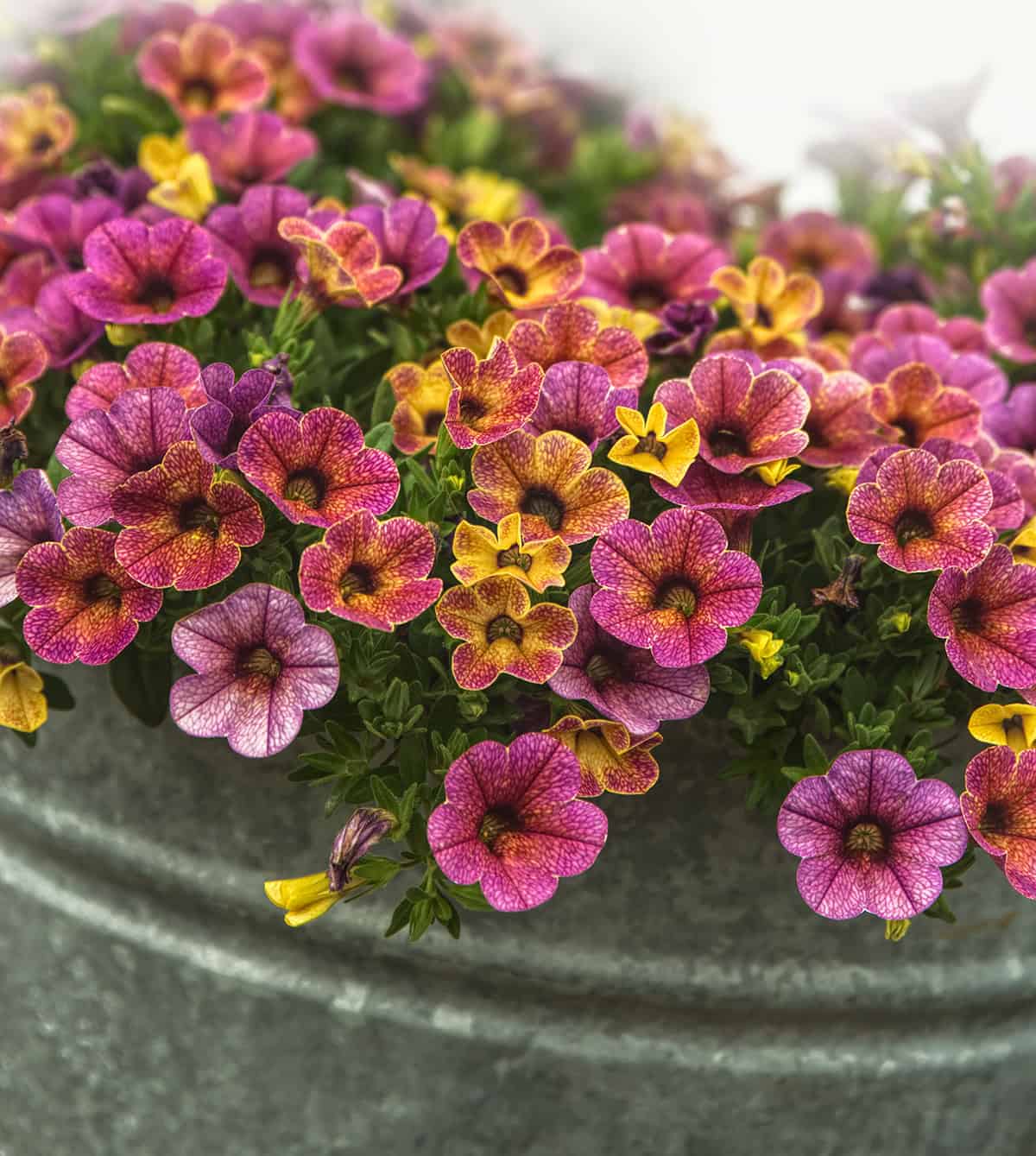
Petunias are a vibrant summer plant that adds color to any garden. They thrive in full sun and well-drained soil. Water petunias regularly, with 1 to 2 inches of water every 7 to 10 days.
Plant petunias after the last frost. In southern regions, it’s safe to plant in late April. In northern areas, mid-May is ideal. For ground cover, space petunias 12 to 18 inches apart for healthy growth.
Petunias need regular fertilizing for continuous blooms. Use a balanced fertilizer every two weeks. Avoid light, and frequent waterings as it encourages shallow roots.
Petunias are versatile. They can be used in hanging baskets, window boxes, or as groundcover. Some types have a cascading habit, making them ideal for decorative containers.
Begonias
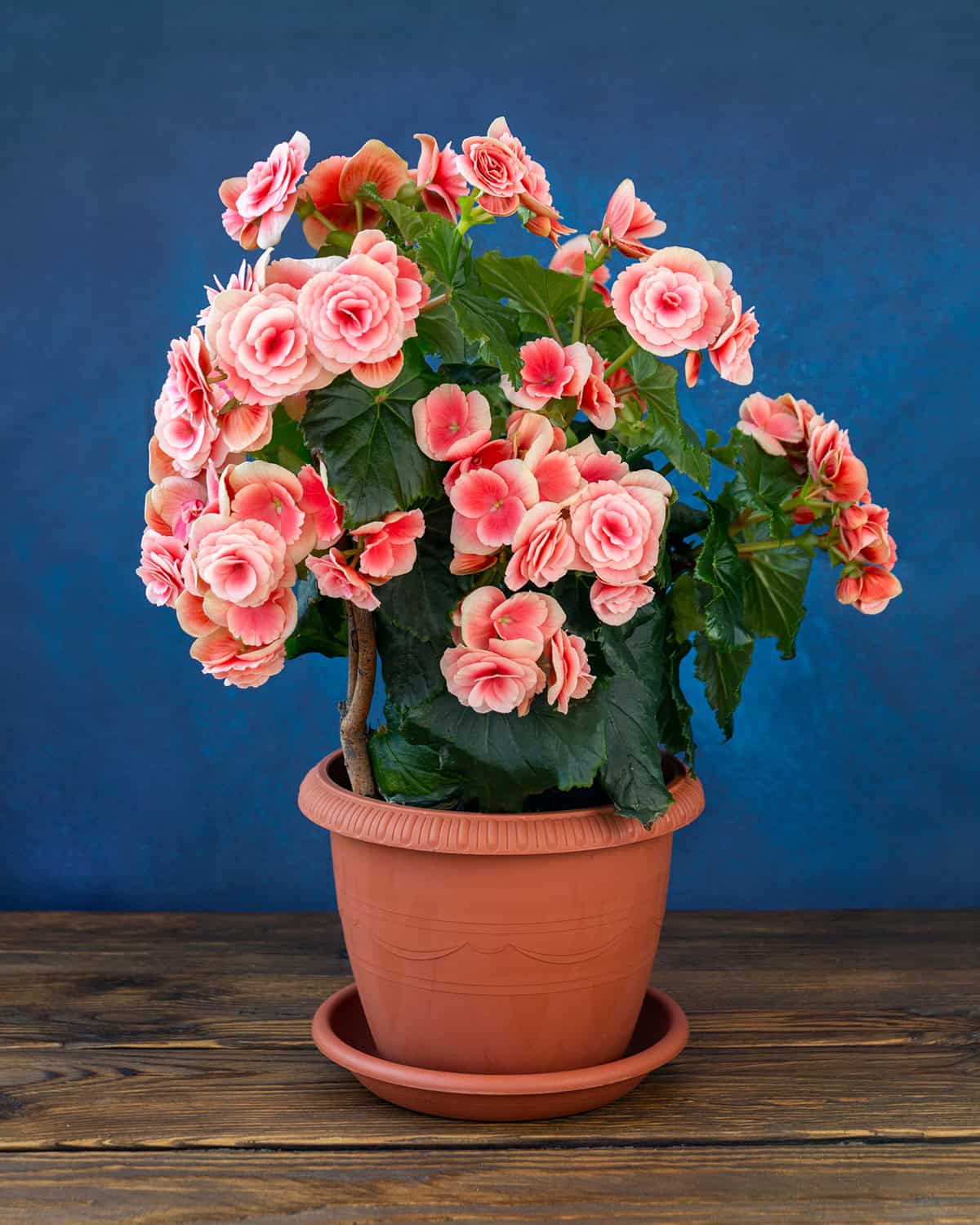
Begonias are a versatile choice for summer gardening. You can grow them for their vibrant flowers or unique foliage. They flourish in shaded and partially shaded areas, perfect for gardens with limited sunlight.
There are more than 1,800 species and hybrids of begonias. They generally fall into three categories: fibrous-rooted, rhizomatous, and tuberous. Each type offers distinct characteristics that can enhance your garden’s appeal.
Fibrous-rooted begonias are commonly used in bedding and container planting. They produce flowers continuously throughout the summer. Rhizomatous begonias, on the other hand, are known for their decorative leaves. They grow well indoors as potted plants.
Tuberous begonias thrive in shady spots and can bloom all summer long. These begonias often display large, showy flowers. They are ideal for hanging baskets, window boxes, and patio containers.
One advantage of planting begonias is their resistance to deer and rabbits, which helps keep them safe from garden pests. Additionally, they are easy to care for, requiring regular watering and occasional feeding with a balanced fertilizer.
You can use begonias to add color to your garden in many ways. Plant them in flower beds, window boxes, or hanging baskets. They can adapt to various environments, making them a reliable choice for both novice and experienced gardeners.
Impatiens
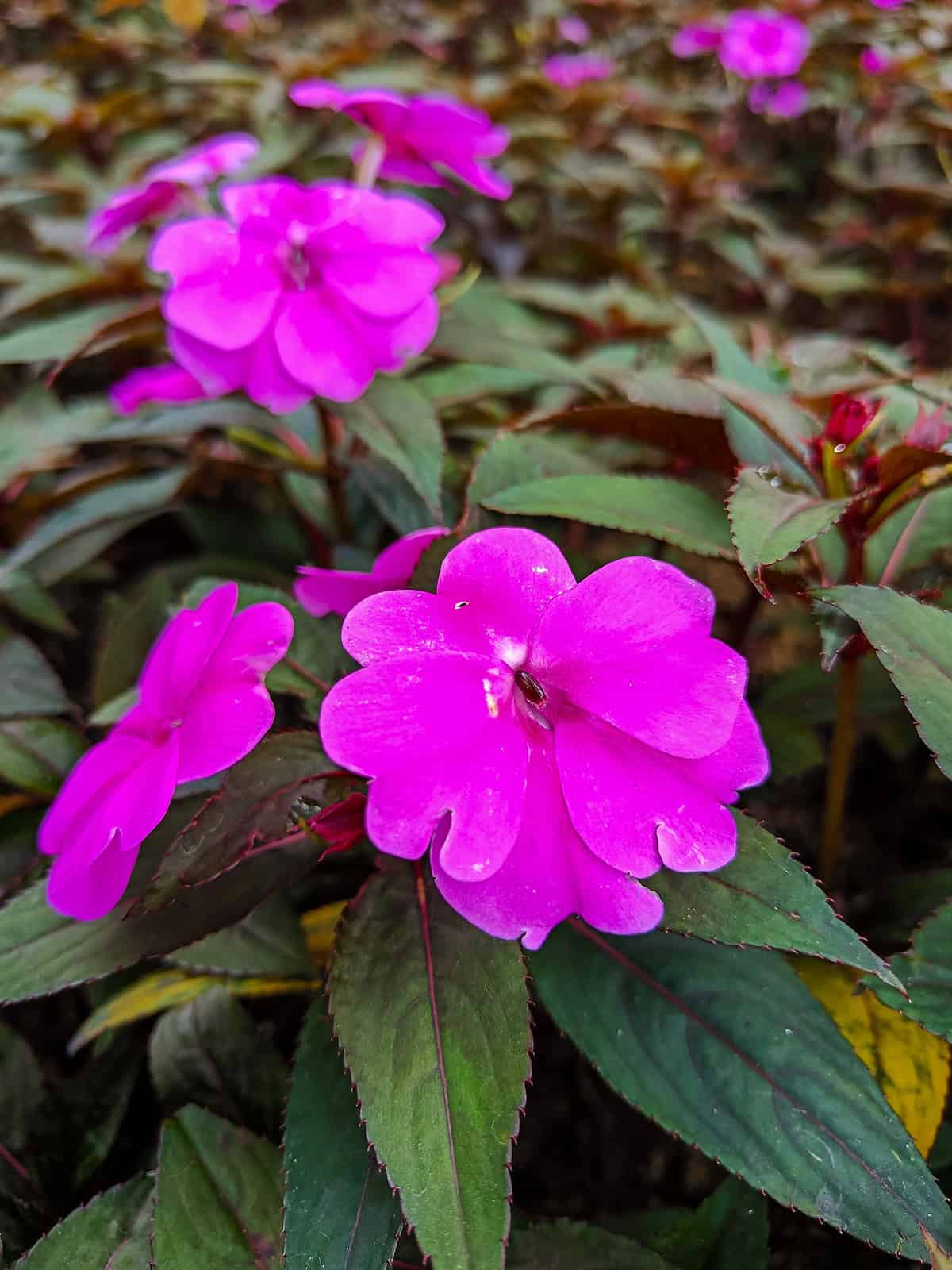
Impatiens, a popular summer plant, thrives in shaded areas. These plants offer vibrant colors throughout the season. New Guinea impatiens are noteworthy. They do well in the sun, though they can’t handle prolonged full-sun exposure. For better results, plant them near others that need similar water levels.
Impatiens walleriana often becomes leggy by late summer. Trim the top one-third to encourage new blooms. They can self-seed. The seeds ripen from late summer to fall.
Downy mildew is a common issue. It usually appears in late summer. Look for yellowing leaves and white, downy growth underneath. New growth may also show yellow and green stippling.
Use impatiens for color in shaded garden spots. Mix them with light-colored foliage plants for a striking display. For more vibrant gardens, choose New Guinea impatiens. They offer larger flowers and colorful foliage suitable for areas receiving more sun.
Geraniums
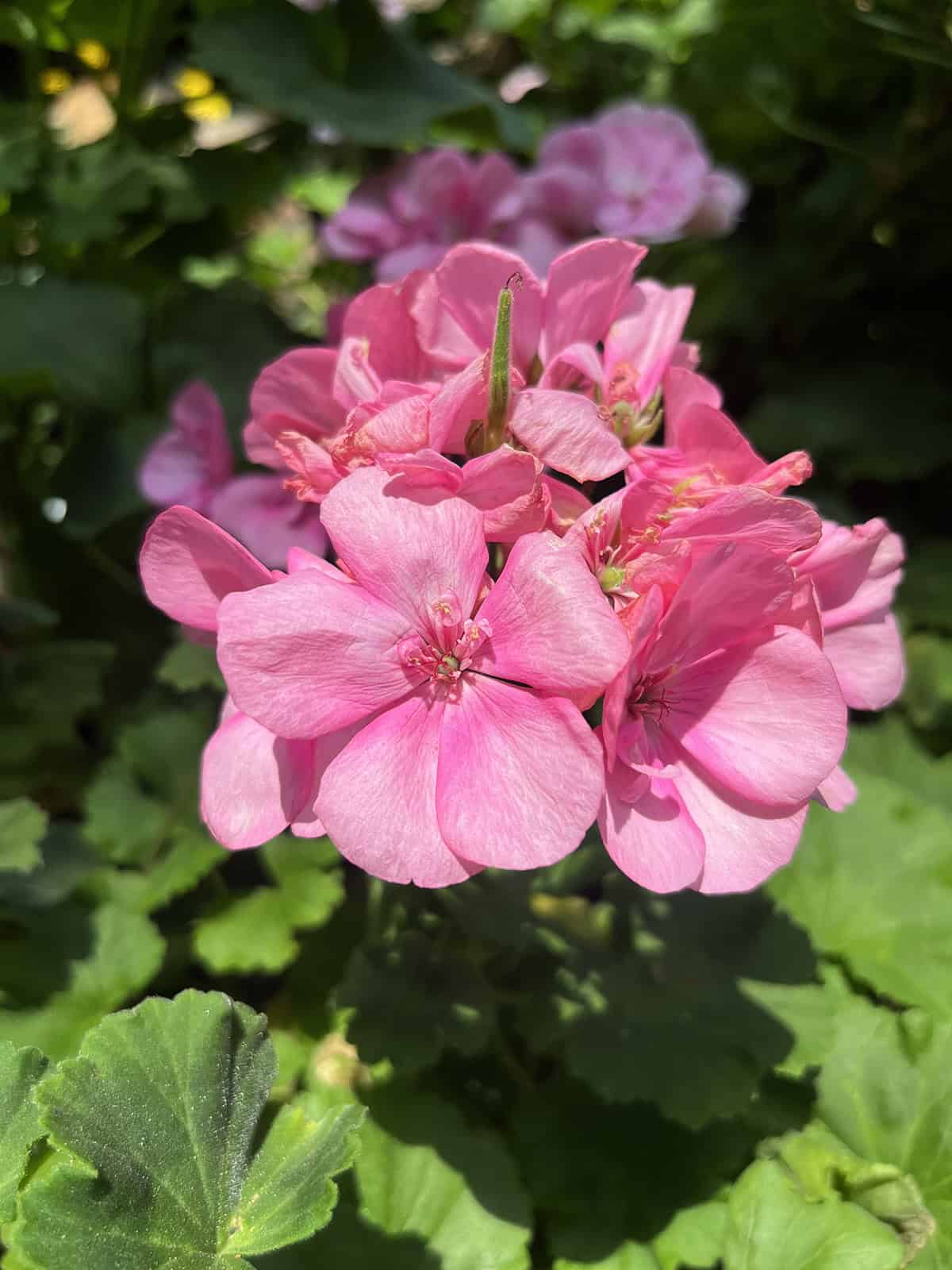
Geraniums grow well in containers and gardens. Keep them in a sunny spot with well-drained soil. Water them regularly, but don’t overwater.
There are different types of geraniums. Zonal geraniums have strong stems and large leaves. Ivy-leaved geraniums have trailing vines, making them perfect for hanging baskets.
Pruning is essential for geraniums. Cut back by one-third to one-half when needed. This encourages new growth and keeps plants healthy.
Use mulch to retain moisture and prevent weeds. Geraniums can be started from seeds or cuttings. Besides summer, they can even be kept year-round with proper care.
Lavender

Lavender is a versatile and aromatic plant prized for its beauty and fragrance. It belongs to the genus Lavandula and includes around 47 species. It’s primarily native to Europe.
Lavender thrives in well-drained, sandy, or gravelly soil. It prefers full sun and does best in cool summer climates. It can grow between 1 to 4 feet tall and 1 to 2 feet wide.
Regular pruning helps maintain its shape and promotes new growth. Prune in the spring after new leaves appear. Don’t prune more than one-third of the plant at a time.
To propagate lavender, you can take cuttings from a vegetative stem. Remove lower leaves, dip the cut end in rooting hormone, and place it in warm, moist potting soil.
Lavender flowers are attractive to bees and other pollinators. The flowers can be dried and used in potpourri. The entire plant is fragrant, adding a pleasant scent to gardens and homes.
Certain types of lavender, like English lavender, are especially hardy. This type produces slender flower spikes and is known for its sweet scent. Lavandula angustifolia, or English lavender, is the hardiest and blooms in early summer.
Lavender is also used for its essential oil. Lavandula angustifolia is the source of true lavender oil. This oil is commonly used in aromatherapy, perfumes, and skincare products. Lavender’s soothing properties make it a popular choice for relaxation and stress relief.
Salvia

Salvia is a versatile plant often seen in summer gardens. It belongs to the mint family, known for its aromatic leaves. This plant is hardy and suitable for various climates.
There are many types of Salvia. Some popular varieties include Mexican Bush Sage (Salvia leucantha), Scarlet Sage (Salvia coccinea), and Blue Sage (Salvia farinacea). Each type offers unique color and growth characteristics.
Salvia leucantha features spectacular purple and white velvety flower spikes. This variety thrives in full sun and can tolerate drought. You can grow it as an annual in cooler areas.
When planting Salvia, ensure the soil is well-draining. Place transplants 24-36 inches apart for optimal growth. Water the plant before removing it from its container, then backfill the hole after planting.
Salvias are relatively drought-tolerant. Despite this, regular watering encourages better blooming. These plants attract pollinators like bees and hummingbirds, making them excellent for gardens.
Most Salvias have square stems and opposite leaves. The leaves are often entire and hairy. Flowers usually have fused petals forming two lobes.
In warmer climates, Salvias can be perennials. In colder areas, they are often grown as annuals. Regular pruning helps maintain their shape and encourages more flowers.
Dahlias
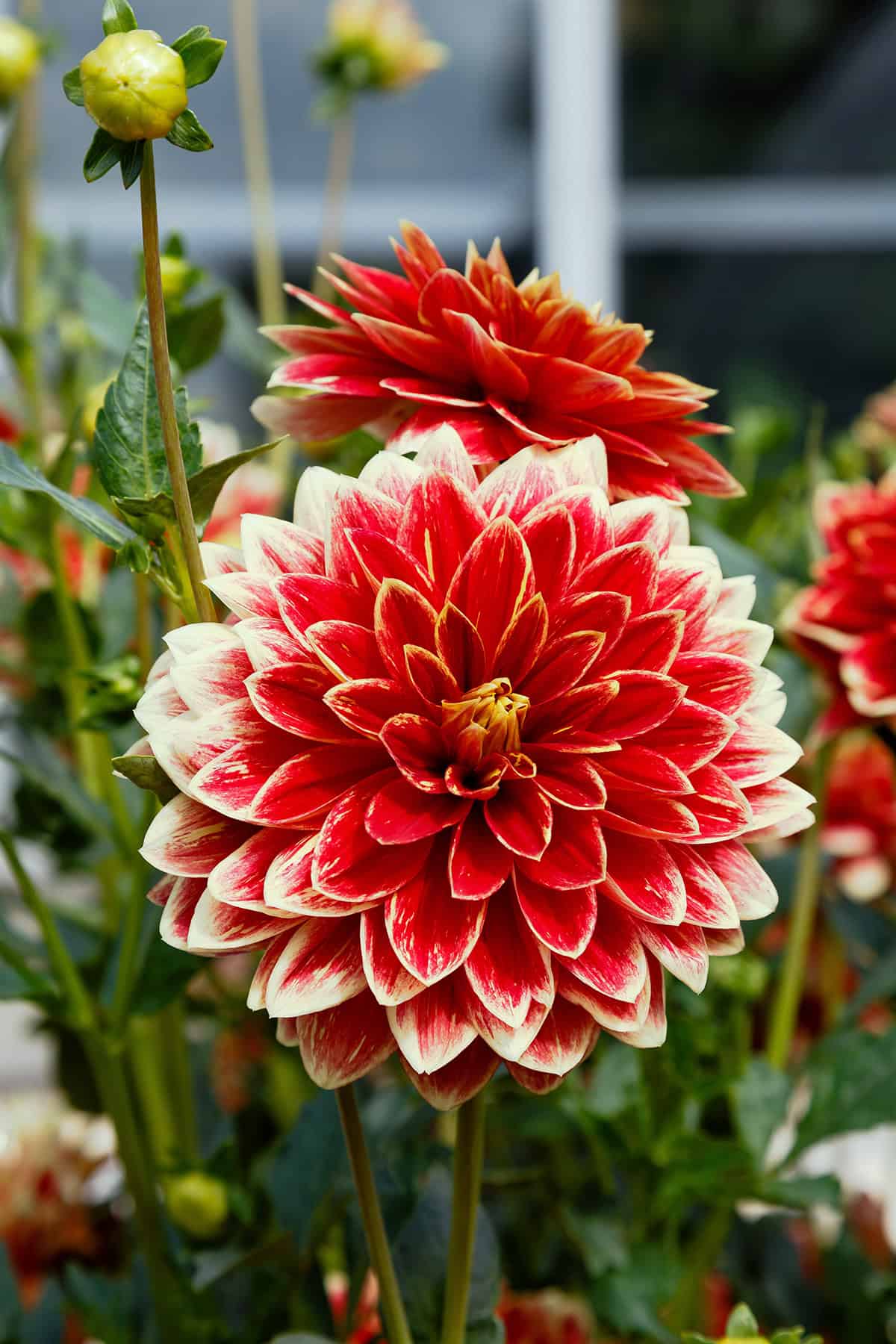
Dahlias are summer-flowering perennials that come in various colors, shapes, and sizes. These flowers thrive in full sun and need well-drained soil. They can grow anywhere from 1 to 6 feet tall.
Choose heat-tolerant varieties if you live in a warm climate like Florida. This helps the plants withstand high temperatures. Regular watering is essential as dahlias are fast-growing and need plenty of moisture.
Fertilize dahlias monthly using a low-nitrogen fertilizer. This keeps the plants healthy and supports blooming. Deadheading spent flowers will encourage further blooms, ensuring a vibrant display throughout the summer.
Different types of dahlias offer unique visual appeal. Flowers can be as small as 2 inches or as large as 12 inches in diameter. Colors range from orange, pink, purple, red, scarlet, yellow, to white. Some varieties even feature striped or multicolored petals.
Plant dahlia tubers in spring, about 1-2 weeks before the last frost date. Cover them to a depth of 3 inches and ensure they have space to grow. Taller varieties may need staking to support their height.
In colder climates, dig up the tubers before winter. Store them in vermiculite or dry sand to protect them from freezing temperatures. In zones 7 to 10, simply mulch over the tubers to shield them during colder months. This careful management ensures dahlias return the following season, rewarding you with another year of stunning blooms.
Lantana

Lantana is a great choice for summer gardens. It thrives in warm climates and tolerates heat and humidity well. You can use it as a small shrub or ground cover.
This plant does well in coastal areas. It can handle salty conditions, making it perfect for beachside gardens. Ensure you plant lantana after the frost risk has passed.
Lantana produces bright flowers all summer. Varieties such as Bloomify Red and Bloomify Rose offer different colors that add charm to your garden.
You should prune lantana if it becomes too large. Regular trimming during the growing season helps maintain its shape. At the end of the season, you can cut it back almost to the ground.
One thing to note is lantana’s rapid growth. Plan its location carefully, especially if you want to control its spread. Watch out for whiteflies and spider mites if you keep the plant over winter.
To get the best flowering results, avoid excessive fertilization as it can reduce blooms. Instead, fertilize moderately and ensure the plant is not water-stressed.
Lantana’s robust nature makes it a reliable choice for summer landscapes. It was one of the favorite plants for hot climates, regularly providing consistent blooms and bright colors.
Cosmos
Cosmos is a popular summer plant known for its vibrant and long-lasting blooms. It thrives in hot, dry conditions, making it ideal for summer gardens. You can find various types of cosmos, such as Cosmos bipinnatus and Cosmos sulphureus, each offering a range of colors and sizes.
Cosmos bipinnatus typically has pink, white, and purple flowers. It can grow from 1 to 6 feet tall. On the other hand, Cosmos sulphureus often features yellow and orange blooms and can reach up to 7 feet in height.
Plant cosmos seeds directly in the garden after the last frost. These plants prefer at least a half-day of direct sunlight. Once established, cosmos requires minimal care, just the occasional watering and deadheading to encourage prolonged blooming.
You can expect cosmos to start flowering in summer and continue until the first frost. Taller varieties may need staking, especially in windy areas. Medium green leaves are deeply cut, giving the plant a delicate, airy appearance.
Cosmos can reseed, making it a low-maintenance addition to your garden. When flowers produce abundant seeds, cut the plants back to 12-18 inches to encourage new growth. This practice also helps increase the number of blooms.
Coleus
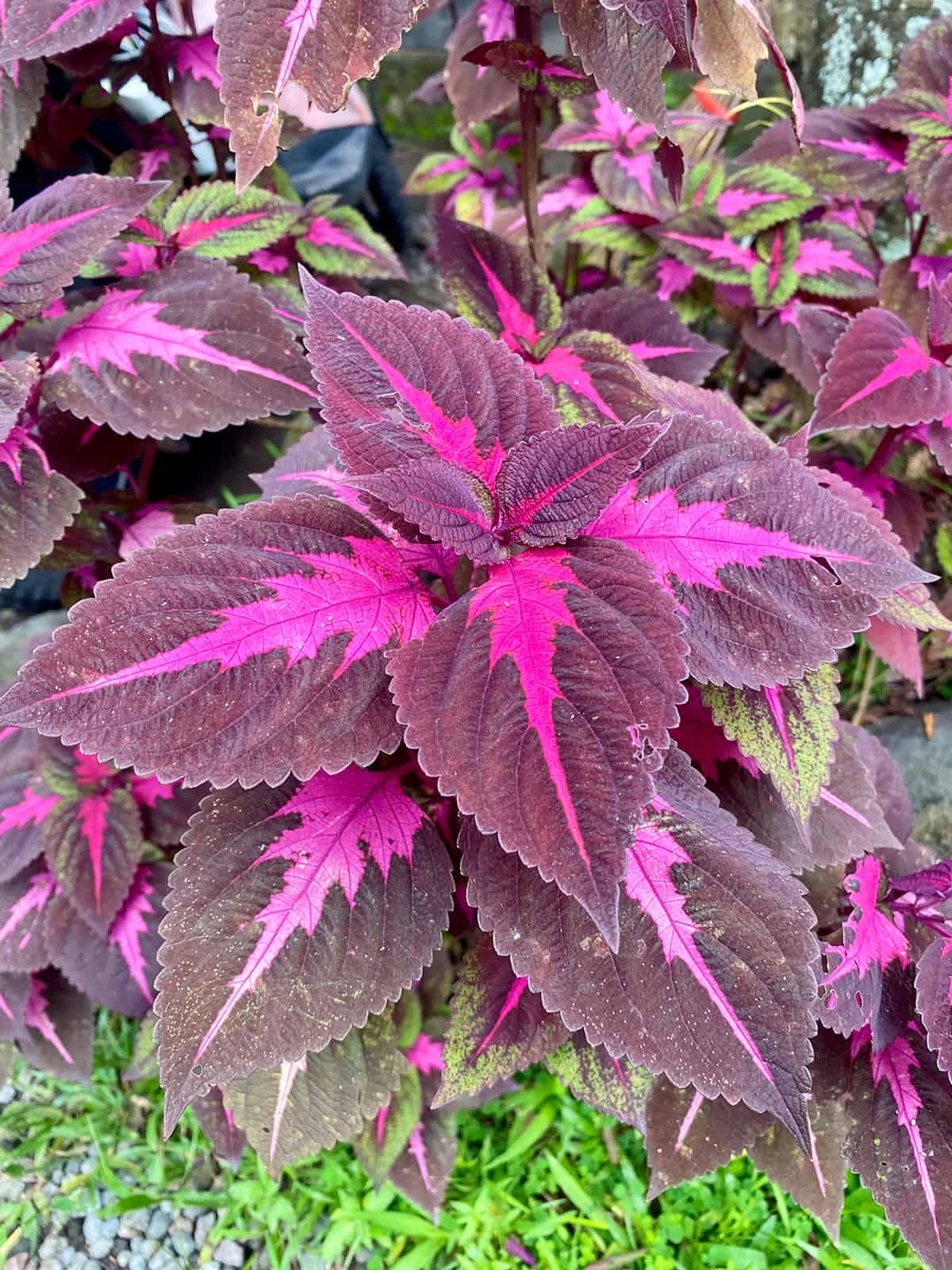
You can find Coleus in various colors like green, yellow, pink, red, and maroon. The plant thrives in warm weather in the summer and can be used in different settings.
This plant grows well in both sun and shade. Depending on the variety, coleus can range from 1 to 3 feet in height. Light conditions and soil type affect their growth.
Coleus adds vibrant color to gardens and landscapes. It is versatile and can be planted in hanging baskets, containers, or garden beds. The foliage is the main attraction, providing a striking visual element.
It is a hardy plant with few pest or disease issues. It is heat-tolerant and suitable for summer planting. Consistent watering, especially during hot months, keeps coleus healthy and vibrant.
When planting coleus, wait until the soil has warmed up. This ensures optimal growth. Proper care and spacing allow the plant to reach its full potential.
Portulaca (Moss Rose)
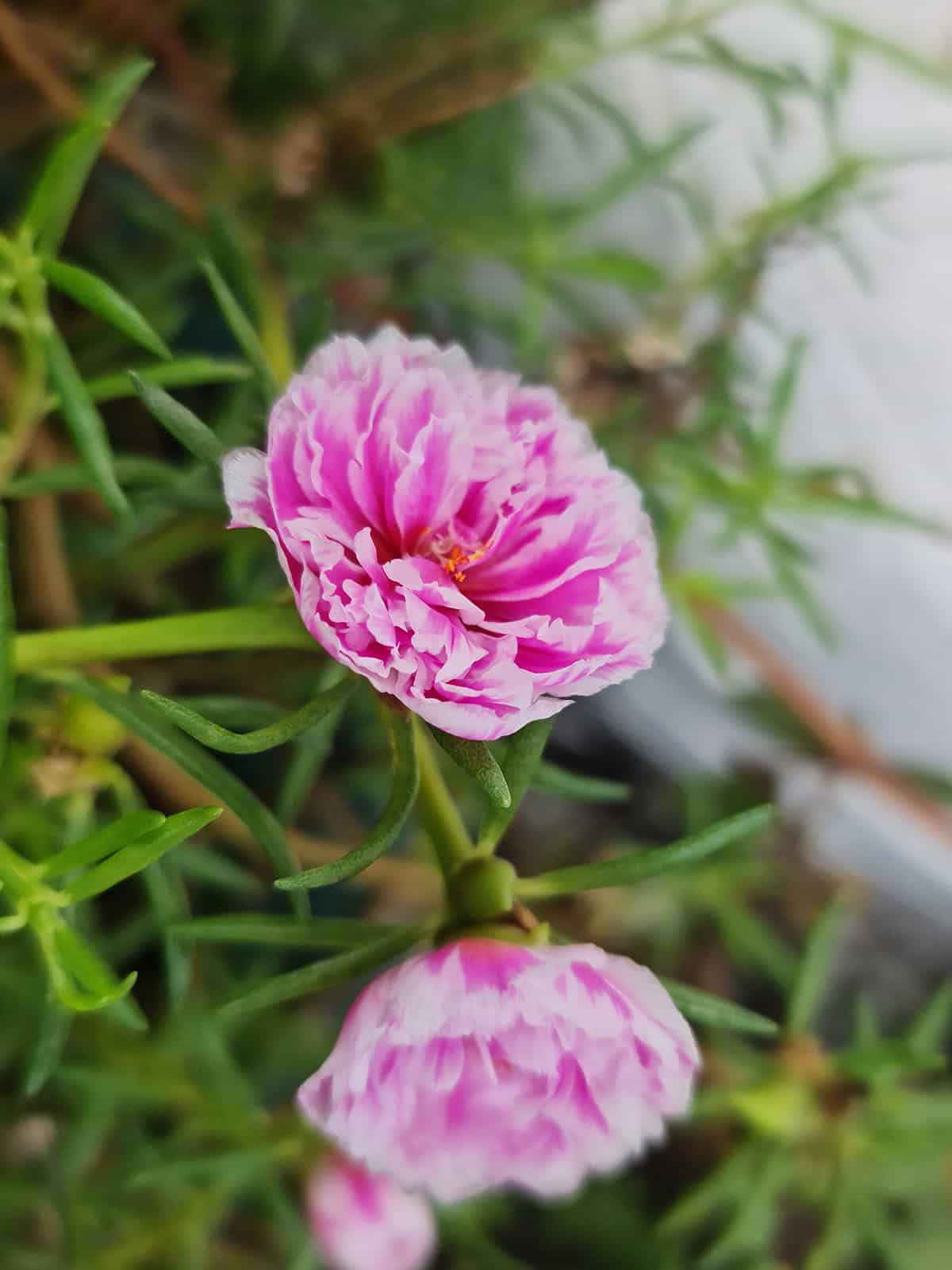
You’ll find Portulaca valued for its vibrant flowers and hardy nature. Native to South America, Portulaca grandiflora thrives in hot, arid regions.
The plant has succulent leaves. These leaves are fleshy and narrow. It grows up to 8 inches tall and 1 foot wide, forming a mat.
Moss Rose flowers are striking. They come in red, orange, yellow, white, and pastel shades. Bloom types include single, semi-double, and double forms.
This plant is heat and drought-tolerant. It can survive the hottest summer days. Moss Rose does well in containers and can be grown as a houseplant.
For best growth, place it in full sun or bright, direct light. The soil should be well-drained. If grown outdoors, remove spent blooms to prevent self-seeding.
Moss Rose adds a colorful touch to gardens and landscapes. The flowers bloom all summer with minimal care. It’s an excellent choice for hot, dry areas.
Calibrachoa (Million Bells)

Calibrachoa, also known as Million Bells, is a popular summer plant. It looks like petunias and is known for its profusion of small, bell-shaped flowers. The plant thrives in full sun and well-drained soils. It is usually grown as an annual.
Native to South and Central America, Calibrachoa can reach a height of 6-12 inches. The plant’s vibrant blooms cover the plant throughout the summer and into the fall. This makes it a favorite for adding color to gardens.
Million Bells are excellent for container gardening. You can also use it in hanging baskets or as ground cover. The flowers come in many colors, including purple, pink, red, yellow, and white.
Caring for Calibrachoa is relatively easy. Ensure the soil remains moist but not waterlogged. Deadheading spent flowers promotes new blooms. Fertilize regularly for the best results.
The plant’s hardiness depends on your local climate. In warmer regions, it can sometimes survive mild winters. In most areas, it is treated as an annual.
Sweet Alyssum
Sweet alyssum, known scientifically as Lobularia maritima, is a popular summer plant. You can find it in gardens and containers. It grows in a mounding form and can reach about 6 to 12 inches in height.
It is a great choice for edging your garden. This plant thrives in full sun and well-drained soil. Sweet alyssum produces tiny clusters of flowers in white, pink, or purple.
You will enjoy its beauty throughout the summer. This plant blooms continuously from winter through spring if conditions are right. In warmer climates, it may bloom year-round.
For dense flower coverage, plant it between walkway stones. The flowers are fragrant and attract pollinators like bees and butterflies. It’s a versatile addition to any garden.
Sweet alyssum is low-maintenance. During hot summers, cutting back the plants helps keep them flowering. They can be left in the garden over the winter in milder climates.
Seeds sown in September can bring blooms in the fall and winter. You can start the seeds indoors 6 to 8 weeks before the last frost date.
Snapdragons
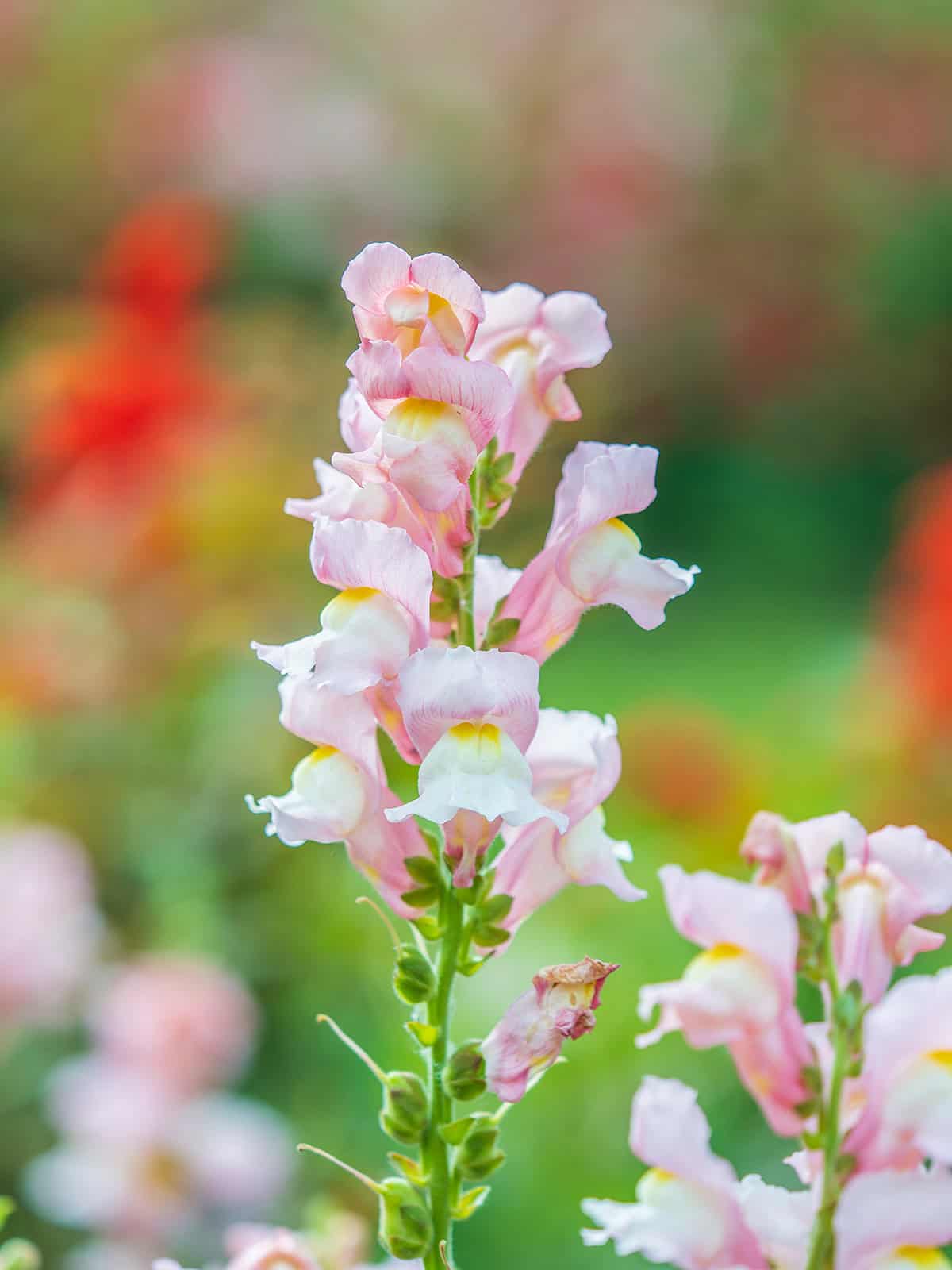
Snapdragons are a popular choice for summer gardens. They feature vibrant blooms and a variety of colors. You can find snapdragons in shades like white, yellow, pink, red, and orange. Their vibrant appearance adds a splash of color to any garden.
These flowers thrive in cooler seasons. They can bloom in the winter but struggle with summer heat. High temperatures slow down their growth and flowering. Planting them in spring or fall gives the best results.
Snapdragons stand upright with tubular flowers. The flowers have a two-lipped appearance, resembling a dragon’s mouth. This unique structure is eye-catching and adds visual interest to your garden.
Spacing between plants is important. Placing them 8 to 9 inches apart allows them to support each other. This setup helps them stay upright and look fuller.
Snapdragons are versatile and complement many garden styles. They do well in flower beds and containers alike. They mix well with other floral species too. They fit well in both formal and casual garden layouts.
If you are in Florida, snapdragons may not fare well during hot summers. For a similar look, consider Angelonias, often called summer snapdragons. They tolerate heat better and provide a similar aesthetic.
Gazania
Gazania is a vibrant, sun-loving plant. It is known for its bright, daisy-like flowers and thrives in full sun and well-drained soil.
The flowers come in a range of colors, including orange, yellow, red, and white. They close at night and might stay closed on cloudy days. In hot southern climates, they often pause blooming during the peak summer heat but resume in the cooler fall months.
This plant typically grows up to one foot tall. The flowers, which can be three to four inches across, look large compared to the plant’s size. Gazania is a popular choice for gardens due to its colorful blooms and low maintenance.
Gazania prefers a sunny position with moderate watering. It’s adaptable to different soils and can tolerate drought conditions. This plant blooms profusely in spring, winter, and fall, with intermittent flowers during the hot summer months.
Gazania’s bright flowers make it a great option for sunny borders or rock gardens. It’s often used as an annual in cooler climates, though it can be a perennial in warmer areas.
Verbena
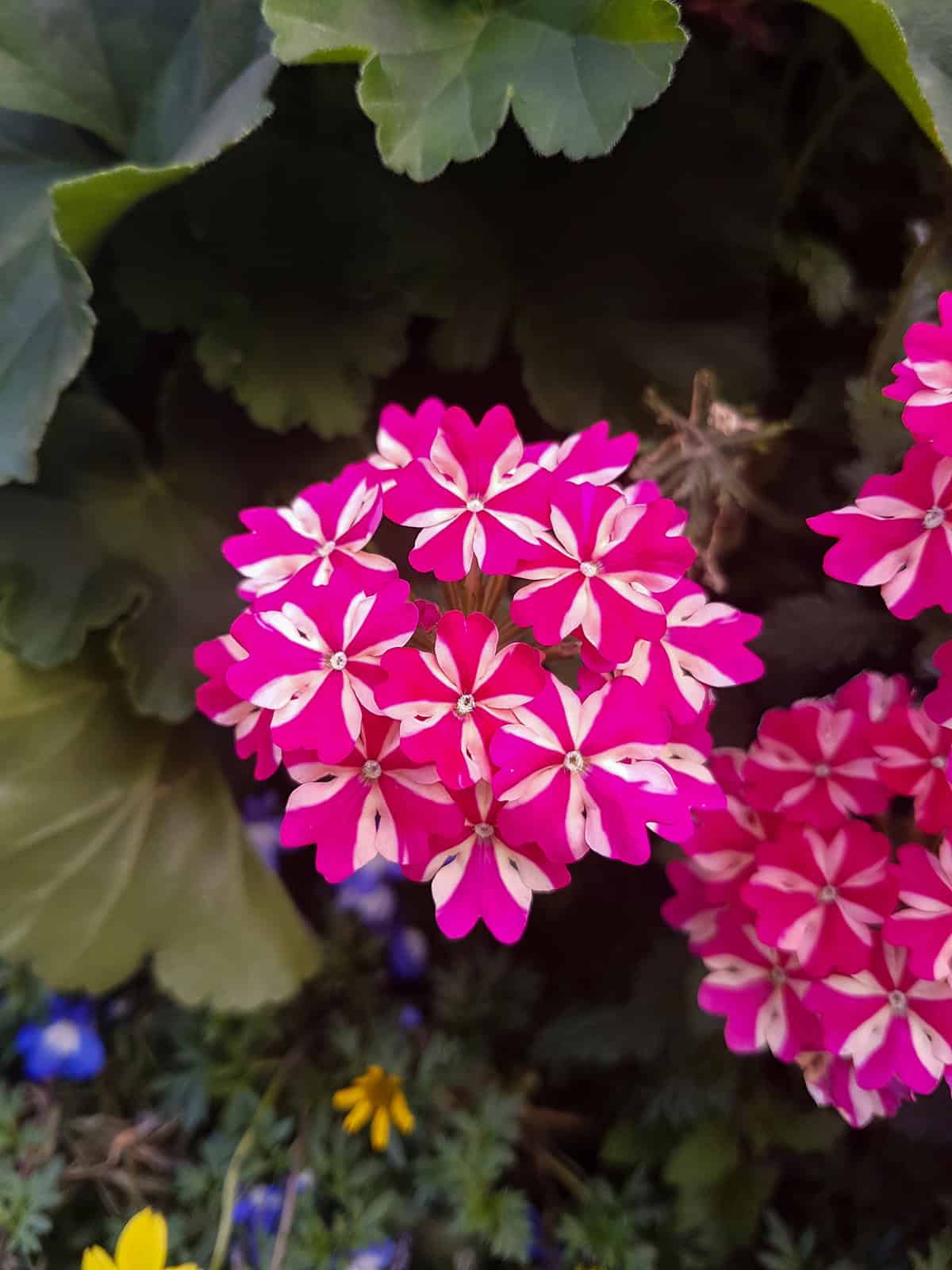
Verbena is a versatile and beautiful summer plant. Its vibrant colors and various species make it a favorite in many gardens.
Your garden can benefit from the tall, upright verbena, with clusters of small purple flowers. This plant adds height and visual interest. Its flowers measure around 2 to 3 inches in diameter.
You might also like the Texas Rose Verbena. This variety has bright rose flowers and lacy foliage. It’s known for its showy blossoms and vigorous growth.
If you prefer ground covers, consider the Rose Verbena. This plant thrives in well-drained soils and full sun. It provides season-long color and works great in rock gardens, containers, or as ground cover.
Another popular type is the Rigid Verbena. Known for its brilliant purple flowers, it forms spreading patches and is widely naturalized along roadsides.
Each type of verbena has its own unique features. Whether it’s for height, ground cover, or vibrant colors, there’s a verbena that fits your garden needs. Your summer garden can become a colorful paradise with Verbena’s mix of varieties and blooms.
Nasturtiums
Nasturtiums are vibrant summer plants. The two main types include trailing and bushy forms. Trailing nasturtiums can climb or spread on the ground, while bushy types form loose, compact mounds.
These plants produce colorful flowers. Their foliage resembles water lilies. Flowers and leaves have a peppery flavor like watercress. This makes them a unique addition to salads and garnishes.
Nasturtiums thrive in warm weather. They prefer cooler summer climates. Extended periods of strong sunlight can stress the plants. They grow best in early summer and fall, requiring regular watering during hotter months.
Both climbing and bushy nasturtiums offer versatility. They are suitable for beds, borders, and ground covers. Climbing types need support for optimal growth, while bushy types are ideal for rock gardens or mass plantings.
This plant is easy to grow. It belongs to the Tropaeolum genus, which includes about 80 species. Nasturtiums are annuals in most regions but can be perennials in warmer zones 9-11.
Nasturtiums also have practical uses beyond aesthetics. Their edible flowers and leaves add flavor to dishes. They also attract beneficial insects, aiding in natural pest control. Thus, they enhance both garden beauty and function.
